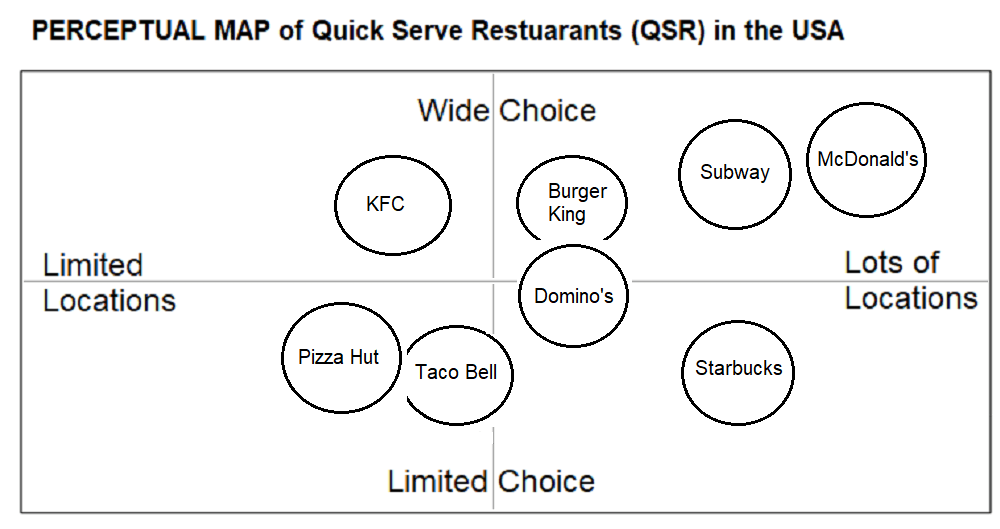
A perceptual map (P-map) is a tool used to illustrate the consumer’s perceptions of a product/ brand.
A perceptual map is a tool for determining the position of a brand in the marketplace, based on consumer perceptions of the brand and its competitors, using attributes that are important to consumers.
The various attributes can be: expensive/inexpensive brand, high/low price, premium/ budget price, high/low quality, etc.
Perceptual Maps are used to determine how various brands are perceived according to the key attributes that customers value. This is important because positioning is a two-way process by which organisations seek to impose attribute perceptions onto customers and customers assimilate those perceptions, modify them or reject them entirely (Baines, Fill and Rosengren, 2017).
A Perceptual Map is also called as a positioning map (P-map). You can read more on positioning in marketing.
When designing a perceptual map for any business, its important to remember the following:
- Why do you think they are in that position against their competitors?
- Identify the most important variables for their target market and use these on the axis of your PERCEPTUAL map.
- Explain WHY these variables are important to the target market.
BATheories.com is managed by a group of educators from Mumbai. We also manage the website AcademicsHQ.com. Our panel includes experienced professionals and lecturers with a background in management. BATheories is where we talk about the various business theories and models for BA (Business Administration) students.